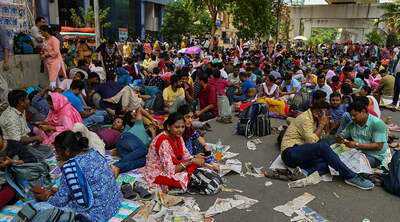A Big Push for Local Manufacturing
India has been making steady progress in electronics manufacturing, for years, particularly in assembling smartphones and consumer electronics.
But here's the challenge-while we've been great at putting things together, we still rely a lot on imported components. However, that's about to change.
The Government of India, on March 28, 2025, announced a US$2.7 billion Production Linked Incentive (PLI) scheme for electronic components. To reduce imports and thereby boost local production, this scheme has a tenure of six years, with a one-year gestation period.
Over the next six years, the scheme should attract US$7 billion in investments, create 91,600 direct jobs and increase value addition in electronics manufacturing in the country.
But it's important to understand that this isn't just about incentives-it is a strategic shift that could push India up the global electronics value chain.
This initiative is the first dedicated PLI scheme for electronic components. It follows the 2020 PLI for large-scale electronics manufacturing, which drove mobile phone assembly. However, it kept India dependent on imports for key components.
This scheme follows the Indian Semiconductor Mission (ISM 1.0) and white goods PLI. It aims to deepen domestic value addition by localizing core electronic components.
Fixing the Weak Link: Core Component Manufacturing
Electronic components are the backbone of consumer electronics, telecom, automobiles, medical devices and defence equipment. But despite the fact that the country has gain prominence as a smartphone manufacturing hub, the domestic value addition in smartphones is just 17%-18% of the Bill of Materials (BOM).
Here's why: 45% of a smartphone's BOM is made up of semiconductor components, which require significant investment and time to manufacture locally. But the other 55%-which includes sub-assemblies like displays, camera modules, enclosures, PCBs and passive components-can be developed much faster. That is exactly what the scheme is aiming for.
The focus? Building local expertise in core components like multi-layer PCBs, resistors, capacitors, transformers, fuses, camera & display modules, enclosures and mechanical parts. By ramping up local production of these critical elements, India can reduce import dependence in tandem with cutting costs and creating a stronger supply chain for manufacturers.
How the PLI Scheme Works
The scheme is designed to work for a myriad of manufacturers. These include high-volume producers, capital-intensive factories, or a mix of both.
Incentives will be structured in three ways-turnover linked (based on revenue), capex intensive (for investments in plants & machinery), or hybrid (a combination of both).
A key element? Employment-linked incentives. The government has tied part of the payouts to job creation. Thus ensuring the scheme not only boosts manufacturing but also creates skilled jobs.
Who Stands to Benefit?
Mobile Phone & Consumer Electronics Players
Companies producing sub-assemblies like displays, camera modules and enclosures will benefit the most as the domestic value addition in smartphones is still under 20%, Among the winners are Dixon Technologies and Optiemus Infracom, to name a few-all of whom are expanding their local sourcing capabilities.
Component & PCB Makers
The scheme focuses on components and sub-assemblies, crucial for boosting value addition. Companies like Kaynes Technology, Sahasra Electronics (PCBs) are big beneficiaries.
Semiconductor & Passive Component Players
While India is still working on semiconductor fabs, several companies already produce chip packaging, resistors and capacitors. Key players include Polymatech Electronics (semiconductor packaging), Sterlite Technologies (optical fiber & telecom components).
EMS (Electronics Manufacturing Services) & PCBA Companies
PCB assembly (PCBA) is a key area where India lags behind in value addition. This scheme will change that. Companies like Syrma SGS Technology (PCB assembly), Avalon Technologies (telecom & defence manufacturing) stand to gain.
Automotive & EV Component Suppliers
The need for battery management systems, sensors, and power electronics is soaring, with the rise of electric vehicles (EVs). Sona BLW (EV motors & control units), Varroc Engineering (automotive lighting & electronics) and Minda Industries (automotive sensors & electronics) are well-positioned to benefit.
Display & Camera Module Makers
Companies focusing on camera modules, display panels and optical sensors will see a strong push with localized production. Tata Electronics (semiconductors & displays), amongst others, can be key beneficiaries.
The Bigger Picture: India's Global Ambitions
The PLI scheme for electronic components isn't just about domestic manufacturing-it's about positioning India as a global leader in the electronics space. However, the big questions is now whether the government will extend similar incentives to global players, how fast supporting infrastructure like semiconductor fabs and R&D centers will develop and whether the implementation speed will match industry expectations.
While these challenges loom, the direction is clear-India is moving up the value chain. It is setting the stage for a stronger, self-reliant electronics ecosystem.
Final Thoughts: The Beginning of "Make in India" Electronics
This US$2.7 billion initiative is a watershed moment for Indian electronics. By shifting focus to core components and sub-assemblies, the government is ensuring that more value is created within India's borders. This is not just in assembling final products but in making the crucial components that power them as well.
As the scheme rolls out, there is a good chance of increased local manufacturing, faster adoption of "Made in India" components and stock market buzz around EMS & component makers.
With big investments, job creation and a push for self-sufficiency, this PLI scheme is just the beginning of India's rise as an electronics manufacturing powerhouse. The question isn't if India will become a global electronics hub. It's when.
Disclaimer
Note: We have relied on data from www.Screener.in throughout this article. Only in cases where the data was not available, have we used an alternate, but widely used and accepted source of information.
The purpose of this article is only to share interesting charts, data points and thought-provoking opinions. It is NOT a recommendation. If you wish to consider an investment, you are strongly advised to consult your advisor. This article is strictly for educative purposes only.
Manvi Aggarwal has been tracking the stock markets for nearly two decades. She spent about eight years as a financial analyst at a value-style fund, managing money for international investors. That's where she honed her expertise in deep-dive research, looking beyond the obvious to spot value where others didn't. Now, she brings that same sharp eye to uncovering overlooked and misunderstood investment opportunities in Indian equities. As a columnist for LiveMint and Equitymaster, she breaks down complex financial trends into actionable insights for investors.









